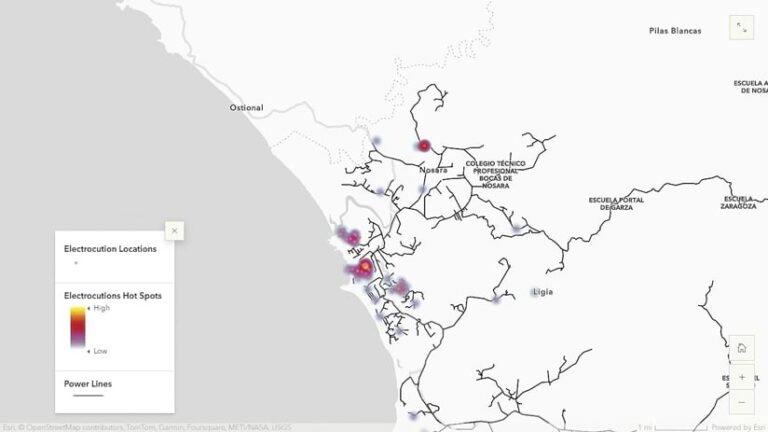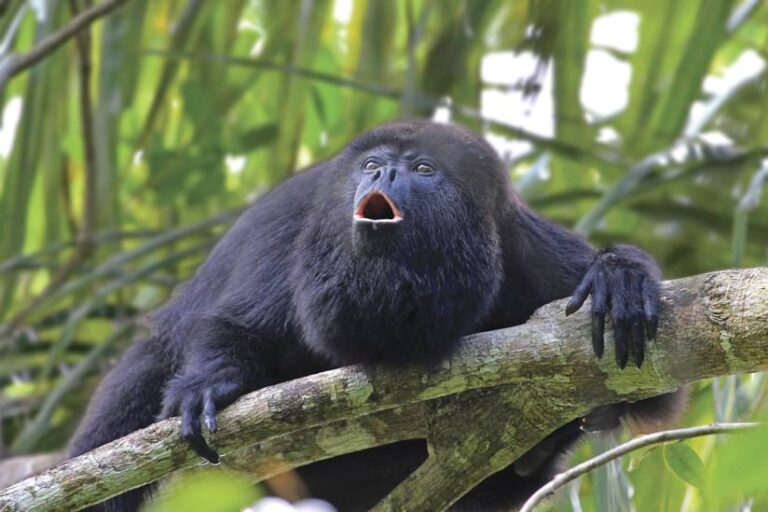One of the most biodiverse countries in the world, Costa Rica is home to about half a million species, including four types of monkeys. One of these is the howler monkey, known for its exceptionally loud howl and its long tail that’s capable of grasping.
Howler monkeys use their tails to swing between trees and other objects. But when a howler monkey touches more than one electrical power line—such as when moving from one to another—it creates an electrical circuit that can injure or kill the monkey and cause a power outage.
This is one of many issues faced by the Costa Rican nonprofit Wild Sun Rescue Center, which rescues, rehabilitates, and releases local wildlife that are sick, injured, or orphaned. From August 2018 to January 2019, more than half of the monkeys taken in by the center were victims of electrocution. Over 75 percent of these 47 monkeys died. Of the survivors, few could be released back into the wild due to age or the severity of their injuries.
To come up with a targeted plan to reduce these deaths, injuries, and financial costs, Esri partner Hammerhead Technology used GIS to compare power line locations with places where howler monkey electrocutions had occurred.

Costs and Potential Solutions
In addition to injuries and loss of life, wildlife electrocutions can represent significant financial costs to two stakeholder groups: conservation organizations and electric companies. Rescue and treatment efforts often cost about $1,500 per monkey—and they sometimes fail to save the creature. Electric companies may face customer complaints and repair expenses that cost $250–$100,000 per incident.
Potential solutions to this issue include tree trimming, building wildlife bridges such as heavy-duty ropes, insulating power lines and other electrified equipment, and moving power lines underground. While insulation and tree trimming are generally the most cost-effective, even these approaches would be prohibitively expensive if implemented across an entire regional electrical network.
Using GIS to Identify Electrocution Hot Spots
Hammerhead researchers employed ArcGIS Pro to explore, analyze, and display key location data for electric poles, power lines, transformers, and howler monkey electrocutions. Once the data was collected and organized, these researchers created separate layers for each element and selected a basemap to show the results in the Costa Rican town of Nosara—known for its thriving howler monkey population—and the Guanacaste province, where Nosara is located.
Once these electrocution hot spots had been identified, another Costa Rican nonprofit organization, the Sloth Conservation Foundation, estimated costs to insulate electrical infrastructure in these places. According to Hammerhead, replacing exposed power lines with insulated lines in hot spots could have prevented up to 70 percent of the electrocutions during the study period in the researched area.

Including the lines—as well as damaged poles and transformers—the total estimated cost for insulating power infrastructure in electrocution hot spots was $17,900–$29,850. In comparison, researchers estimated, the total combined repair costs for these locations could easily have reached hundreds of thousands or even millions of dollars.
Staff at Hammerhead and several Costa Rican conservation organizations hope to collaborate with local electric companies to implement targeted mitigations based on the GIS data. This hope was further fueled by a 2024 decree issued by the Costa Rican government that requires power companies to take responsibility for wildlife electrocutions.
Applying the Technology Elsewhere
Hammerhead is also using this technology in Florida to evaluate a variety of data layers, including ones that show speeding and poaching incidents, wildlife injuries and deaths, protected areas, traffic volume, and property development. With these layers, GIS can help government agencies track wildlife and criminal incidents and identify places for potential preventive action, such as installing additional police presence.
Hammerhead staff view these efforts in Florida and Costa Rica as key steps in combining GIS technology and conservation to make the world a better place.


